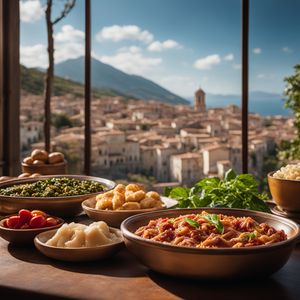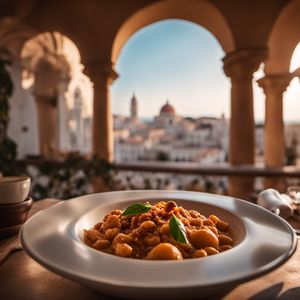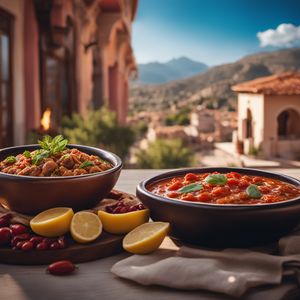
Dish
Frittata pasquale umbra
Easter Frittata from Umbria
Frittata pasquale umbra is made by whisking together eggs, grated Parmesan cheese, chopped parsley, and chopped garlic. The mixture is then poured into a hot skillet and cooked until the eggs are set. This dish is typically served at room temperature and is perfect for a springtime brunch or lunch.
Origins and history
Frittata pasquale umbra is a traditional Easter dish that has been enjoyed in the Umbria region of Italy for centuries. It is often served as part of a larger Easter feast that includes other traditional dishes such as lamb and artichokes.
Dietary considerations
Gluten-free, vegetarian
Variations
Frittata pasquale umbra can be made with a variety of herbs, such as basil, oregano, or thyme. Some recipes also call for the addition of cooked vegetables, such as asparagus or spinach.
Presentation and garnishing
Frittata pasquale umbra can be garnished with fresh herbs, such as parsley or chives.
Tips & Tricks
To make a perfect frittata, be sure to whisk the eggs well and cook the frittata over low heat to prevent burning.
Side-dishes
Frittata pasquale umbra can be served with a simple green salad or roasted vegetables.
Drink pairings
This dish pairs well with a light red wine, such as Chianti or Pinot Noir.
Delicious Frittata pasquale umbra recipes
More dishes from this category... Browse all »

Affunnatielle
Italian cuisine

Ajitsuke tamago
Japanese cuisine

Anglesey Eggs
Welsh cuisine

Balbuljata
Maltese cuisine

Black Pudding Scotch Egg
English cuisine

Búbos rántotta
Hungarian cuisine

Chai poh neng
Chinese cuisine

Chhài-pó͘-nn̄g
Taiwanese cuisine
More cuisines from this region... Browse all »

Abruzzese and Molisan cuisine
Savory, Earthy, Rustic, Hearty

Apulian cuisine
Fresh, Savory, Rustic, Simple

Arbëreshë cuisine
Savory, Tangy, Herbaceous, Spicy

Basilicatan (Lucanian) cuisine
Savory, Earthy, Rustic, Hearty

Ligurian cuisine
Light, Delicate, Herbaceous, Salty

Lombard cuisine
Rich, Savory, Meaty, Cheesy

Neapolitan cuisine
Bold, Savory, Spicy, Tangy, Fresh

Roman cuisine
Fresh, Light, Herbaceous, Tangy, Savory

